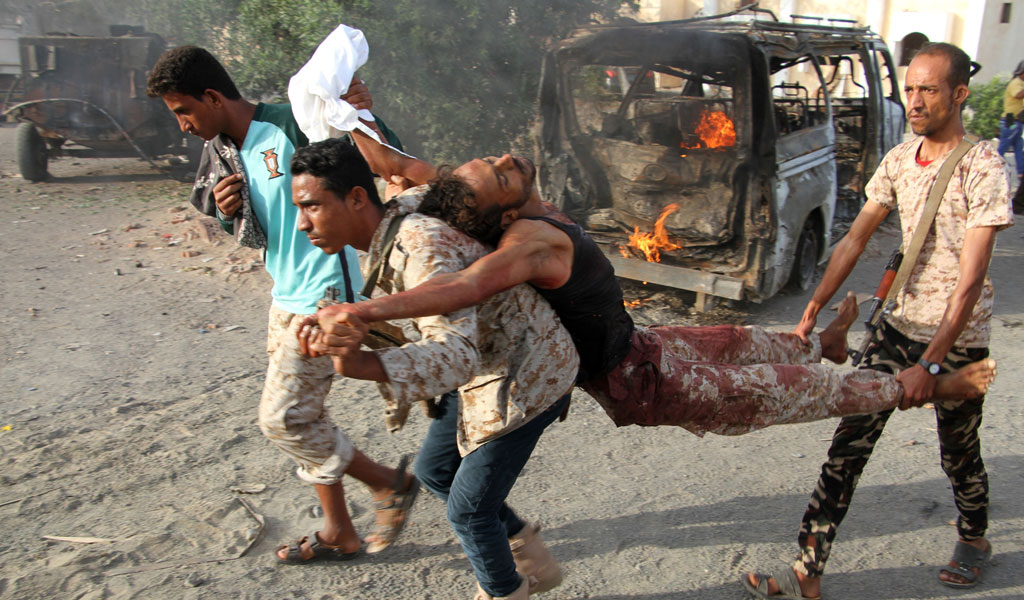
The leader of Al-Qaeda’s branch in Yemen said in a statement aired on the branch’s propaganda outlet that his group has formed alliances with other Sunni jihadists in the country, including the Muslim Brotherhood.
From the Associated Press report:
“‘We fight along all Muslims in Yemen, together with different Islamic groups,’ he said, adding that his followers have teamed up with an array of factions — including the ultraconservative Salafis, ‘the Muslim Brotherhood and also our brothers among the sons of (Sunni) tribes’ — against Yemen’s Shiite rebels known as Houthis.”
Al-Qaeda’s links to the Yemeni branch in the Muslim Brotherhood go far back, particularly through a jihadist cleric named Abdul-Majeed al-Zindani. He is a co-founder of the Brotherhood’s party in the country which is called Islah.
Zindani is also very close to Hamas, the Palestinian branch of the Muslim Brotherhood.
Zindani was deeply involved in the top tier of the international jihadist network that included Osama Bin Laden. Before his death, Bin Laden picked Yemen as the best “launching point” for establishing a theocratic Islamic State. He was undoubtedly aware of the Brotherhood cleric’s role in creating that environment and thankful for it.
A 1993 State Department report said he was part of a circle of leaders with a “close working relationship” that included the “Blind Sheikh” who inspired the 1993 World Trade Center bombing; Hasan al-Turabi, a Muslim Brotherhood cleric in Sudan who has been called the ““Pope of Terrorism;” Afghanistan-based jihadist Gulbuddin Hekmatyar and Sheikh Gilani, leader of Jamaat ul-Fuqra, now known as Muslims of America.
In 2004, the U.S. Treasury Department named Zindani as a “Specially Designated Global Terrorist” because of his involvement with Bin Laden and Al-Qaeda. The department said he was linked to Ansar al-Islam, a Kurdish terrorist group in Iraq loyal to Al-Qaeda, and leads a radical university in Yemen known for producing terrorists.
A U.S. federal court said Zindani coordinated the bombing of the USS Cole in 2000 and a lawsuit accuses him of having personally chosen the two suicide bombers for the attack.
Senior Al-Qaeda operative Anwar al-Awlaki found shelter with the Brotherhood in Yemen. He hid in three homes owned by Islah members before he was killed by an American drone. One home belonged to Amin al-Okaimi, the chairman of Islah. The second safehouse was owned by al-Awlaki’s driver, whose brother is a high-level Islah official. The third house belonged to Zindani.
Trump Administration is examining whether or not to designate the Brotherhood as a Foreign Terrorist Organization. If it doesn’t designate the Brotherhood as a whole, surely it can designate individual branches. After all, the Palestinian wing—Hamas—has been designated since 1997.
At the very least, the State Department should designate the Yemeni Muslim Brotherhood for its close ties to Hamas and Al-Qaeda, as now publicly confirmed by the Al-Qaeda in the Arabian Peninsula affiliate in Yemen.
 Ryan Mauro is ClarionProject.org’s Shillman Fellow and national security analyst and an adjunct professor of counter-terrorism. He is frequently interviewed on top-tier television and radio. To invite Ryan to speak, please contact us.
Ryan Mauro is ClarionProject.org’s Shillman Fellow and national security analyst and an adjunct professor of counter-terrorism. He is frequently interviewed on top-tier television and radio. To invite Ryan to speak, please contact us.
